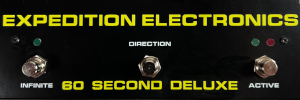
Monday, February 02, 2009
testing the sherman filter bank
YouTube via hydra913. via MrLonghair in the comments of this post.
"Tyler brings over a sherman filter and this is our first run with it."
Casio Event and Mods from the 1980s
 You can find more info including a pdf of the modifications from Robin Whittle here.
You can find more info including a pdf of the modifications from Robin Whittle here.Regarding the event:
"There is a gig this weekend 2009 February 13th [in Melbourne]: http://www.myspace.com/batterycovermissing focusing on 1980 to 1985 Casios!"
Sunday, February 01, 2009
Korg MS-20 & Alesis HR-16
YouTube via deused
"Here is a song i've made.
Everything Korg MS-20 except drums, Alesis HR-16.
I've controlled my MS-20 with a Midi to CV converter from Doepfer (mcv4).
Recorded in Logic Pro.
---------------
note, this is not a live performance, everything is pre-recorded
---------------
More info about the Korg MS-20 website soon! its coming! (really now!)"
MIDIbox SEQ V4 Teaser
YouTube via ucapps
"Demonstration of an early alpha version of the upcoming MIDIbox SEQ V4.
Stereo Version at Vimeo
Many planned features are not available yet. However, most functions of MBSEQ V3 have already been re-implemented in C for the new MBHP_CORE_STM32 module and for an accurate PC/Mac based emulation. I also started to add new functions which were too complex for the old PIC based core.
[0:00] new frontpanel designed by Wilba (but the firmware will also support the frontpanel of MBSEQ V2 and V3)
[0:02] a drum track can play up to 16 instruments
[0:10] patterns are stored on a SD card now, and can be loaded (and stored) w/o sequencer hickups
[0:18] zoomed step view (shows 64, 128, 256 steps on a single page)
[0:10] snare is triggered with the overworked (more flexible) roll function at 384ppqn resolution
[0:20] new pattern selection page with pattern labels and categories
[0:23] MIDIbox SID V2 in bassline mode
[0:30] Roll function used on the bassline
[0:38] a loopback track controls the transposer, it doesn't matter anymore at which position this track is located
[0:53] Piano controlled from a track in chord mode
[1:13] some randomly selected chords
[1:24] simple synth line
[1:45] now with MIDI echo in Force-to-Scale mode (synth is in mono mode, therefore only one sound will be played - it sounds like an arpeggio)
[2:14] a second MIDIbox SID bassline is played
[2:43] slowly muting the tracks
[3:00] thanks for listening! :-)
This track has been made in a 2 hours session on a sunday afternoon after the last blocking bugs have been fixed"
Roland SH-7 "Drone" (Sample/Hold)
YouTube via DeathByDinSync
"Analog bubbles & blurps. The Roland SH-7 up close and personal... with Sample/Hold & LFO madness. If you want more "musical" videos of the SH-7, check my other vids.
My Music
http://www.deathbydinsync.com
http://www.archive.org/details/Random..."
Sunday Night in the Cockpit
YouTube via kipptumor
"I thought I would show you how we have been making patterns and grooves lately for eventual use in our live laptop digital DJ rig. I have been experimenting with MIDI chaining the gadgets up different ways, and in this instance I am using my Electribe RMKII as the master clock device. Using a drum machine as a master tends to send some rather"dirty" sounding patterns to the other devices, but strange things can occur also doing this.
The Future Retro Revolution has a controlled voltage output for pitch and gate functions so I like to send those to my synthesizers.com Studio44 modular cabinet's oscillators. The Alesis Micron will play whatever patterns it has stored independently of the Electribe's "note" information, but it sill is in sync with the MIDI clock signal. Same with the MoPhatt. I record each part separately into the PC,line them up to the time grid, and then load them individually into the laptop and Ableton. That way we can re-mix these elements live in the DJ rig. I should be drawing this portrait job I have been working on for five weeks, but I have pissed away yet another weekend on music. This is why I got a 1.58 GPA at the Kansas City Art Institute - MUSIC! I'll post a video of my pencil drawings soon."
LZX Industries MONOLITH analog synth MFOS Soundlab
LZX Monolith Synthesizer Demo
'The LZX Industries Monolith is a performance monosynth based on the MFOS (Music From Outer Space) Soundlab Plus, featuring a 37 key 1V/Oct keyboard, as well as extensive modulation controls.
This video demonstrates control via an external sequencer. Our Midibox SEQ3 controls both oscillators and gates the envelope generator.
More information will be available soon. For now, find out more about the Soundlab at www.musicfromouterspace.com."
 via this auction.
via this auction.
 Note this is the one in this video as well.
Note this is the one in this video as well.
"List of Features:
- 3 Octave Analog Keyboard with Glide Amount control. Switch controls for Glide On/Off, VCO1 Control On/Off, VCO2 Control On/Off and Envelope Gate Control On/Off.
- Low Frequency Oscillator with four selectable waveforms: Square, Saw, Triangle, and Ramp. High/Low Range Switch.
- Envelope Generator with Attack & Release time controls. Gate/Trigger mode switch. Cycle On/Off switch.
- Voltage Controlled Oscillator 1 with Coarse & Fine tune controls. Saw output. VCO2 Sync On/Off switch.
- Voltage Controlled Oscillator 2 with Coarse & Fine tune and Pulse Width controls. Square & Saw outputs
- Audio Source Mixer with level controls for VCO1 Saw, VCO2 Saw, VCO2 Square, White Noise, and the 1/4" Jack Auxiliary Input.
- State Variable Filter with Cutoff & Resonance controls. Lowpass/Bandpass switch.
- Voltage Controlled Amplifier with Gain Control.
- Master Output Level control.
- 11 Total Modulation Level Controls! LFO>VCO1, LFO>VCO2, LFO>VCO2 PWM, LFO>VCF, LFO>VCA, EG>VCO1, EG>VCO2, EG>VCO2 PWM, EG>VCF, EG>VCA, VCO2>VCO1 FM.
- 1/4" CV Outputs for 1V/Octave, 1V/Octave with Glide, Gate, and Trigger.
- 1/4" CV Inputs for VCO1, VCO2, VCF and EG.
- 1/4" Output & Auxillary Input
- 12VAC 300mA Power Adapter Included."
'The LZX Industries Monolith is a performance monosynth based on the MFOS (Music From Outer Space) Soundlab Plus, featuring a 37 key 1V/Oct keyboard, as well as extensive modulation controls.
This video demonstrates control via an external sequencer. Our Midibox SEQ3 controls both oscillators and gates the envelope generator.
More information will be available soon. For now, find out more about the Soundlab at www.musicfromouterspace.com."
 via this auction.
via this auction.  Note this is the one in this video as well.
Note this is the one in this video as well."List of Features:
- 3 Octave Analog Keyboard with Glide Amount control. Switch controls for Glide On/Off, VCO1 Control On/Off, VCO2 Control On/Off and Envelope Gate Control On/Off.
- Low Frequency Oscillator with four selectable waveforms: Square, Saw, Triangle, and Ramp. High/Low Range Switch.
- Envelope Generator with Attack & Release time controls. Gate/Trigger mode switch. Cycle On/Off switch.
- Voltage Controlled Oscillator 1 with Coarse & Fine tune controls. Saw output. VCO2 Sync On/Off switch.
- Voltage Controlled Oscillator 2 with Coarse & Fine tune and Pulse Width controls. Square & Saw outputs
- Audio Source Mixer with level controls for VCO1 Saw, VCO2 Saw, VCO2 Square, White Noise, and the 1/4" Jack Auxiliary Input.
- State Variable Filter with Cutoff & Resonance controls. Lowpass/Bandpass switch.
- Voltage Controlled Amplifier with Gain Control.
- Master Output Level control.
- 11 Total Modulation Level Controls! LFO>VCO1, LFO>VCO2, LFO>VCO2 PWM, LFO>VCF, LFO>VCA, EG>VCO1, EG>VCO2, EG>VCO2 PWM, EG>VCF, EG>VCA, VCO2>VCO1 FM.
- 1/4" CV Outputs for 1V/Octave, 1V/Octave with Glide, Gate, and Trigger.
- 1/4" CV Inputs for VCO1, VCO2, VCF and EG.
- 1/4" Output & Auxillary Input
- 12VAC 300mA Power Adapter Included."
Polaris Sysex
"The Polaris sysex is essentially a command-language, as noted in the MIDI Implementation Manual (see Polaris manuals).
To send program data you need to send a sysex message to 'open' an object, then 'write' to an object.
Ideally, a .syx file to place a patch would perform 3 steps:
1. send a 'create object' message to the Polaris (to create a new, program - if the section is currently empty);
2. send a 'open object in write mode' message; and,
3. send the program data to the object."
More info on the Rhodes Chroma site.
To send program data you need to send a sysex message to 'open' an object, then 'write' to an object.
Ideally, a .syx file to place a patch would perform 3 steps:
1. send a 'create object' message to the Polaris (to create a new, program - if the section is currently empty);
2. send a 'open object in write mode' message; and,
3. send the program data to the object."
More info on the Rhodes Chroma site.
Blindoldfreak Halifax 1.31.2009 Part 1-6
YouTube via blassster
"Shot with an old digital camera. All I can say, heh.
If you find me shaking a lot... there's only so long someone can hold up a pose without getting tired.
Sorry for the darkness. The original video on my camera looks fine compared to this..."
Alessandro Cortini Montreal 30-01-09 Part I
YouTube via bloodofreptile. These are from the show mentioned in this post.
"The sound isn't great, and the picture is moving a lot, but I did what I could with what I had!"
Alessandro Cortini Montreal 30-01-09 Part III
"End of the show. Again the sound isn't as great as it could have been..."
I'm not seeing Part II yet. I'll put up a new post when I see it.
Metasonix Pre-Orders at Analogue Haven
 http://www.analoguehaven.com
http://www.analoguehaven.com"the r-51 is unique and never before available in any form. it uses two remote-cutoff pentodes, type 26a6. two cv inputs are available for controlling circuit distortion from less than 2% up to more than 40% (varies with individual tubes). two cv inputs also allow use of the r-51 as a conventional synthesizer vca, with gain variable from less than -75db to +5db (typical). both distortion and vca features can be used simultaneously. this allows true vacuum-tube asymmetrical soft clipping to be applied to any waveform. with suitable cv processing, the r-51 can be configured as a true "variable mu" limiter or expander."
 "the r-52 uses two pentodes, type 12au6. the circuit is derived directly from our award-winning tm-2 filter, but with all the features of our tm-6 filter. a pair of bandpass filters is swept with a vactrol(tm) control element, a resonant treble filter and a less-resonant bass filter, giving a 4-pole lowpass response. filter sweep range (approx): bass-only 80-200 hz, bandpass/lowpass low setting 300-1000 hz, high setting 800-1900 hz. filter resonance/q adjustable from less than 1 to oscillation. voltage gain approx. 2 with resonance set to 10 o'clock position and input level set to maximum. both filters, or one at a time, may be selected and mixed in desired amounts using the front-panel response control. this allows for a wide range of equalization and special sound effects. cv inputs are available for sweeping the cutoff frequency and for affecting the treble filter's resonance. circuit distortion is less than 0.5% typical."
"the r-52 uses two pentodes, type 12au6. the circuit is derived directly from our award-winning tm-2 filter, but with all the features of our tm-6 filter. a pair of bandpass filters is swept with a vactrol(tm) control element, a resonant treble filter and a less-resonant bass filter, giving a 4-pole lowpass response. filter sweep range (approx): bass-only 80-200 hz, bandpass/lowpass low setting 300-1000 hz, high setting 800-1900 hz. filter resonance/q adjustable from less than 1 to oscillation. voltage gain approx. 2 with resonance set to 10 o'clock position and input level set to maximum. both filters, or one at a time, may be selected and mixed in desired amounts using the front-panel response control. this allows for a wide range of equalization and special sound effects. cv inputs are available for sweeping the cutoff frequency and for affecting the treble filter's resonance. circuit distortion is less than 0.5% typical." "the r-53 is directly derived from our legendary tm-1 device. it uses a 12af6/bd6 remote-cutoff pentode and a 12av7 dual triode. waveshaping is provided by a vacuum-tube "pulser" circuit that spits irregular pulses onto the input waveform. they synchronize erratically with the input pitch (if a waveform with sharp transitions is used). combined with true vacuum-tube circuit distortion, this can provide a vast range of complex, aggressive distortion effects, utterly unique in the world. a basic ring-modulation function is also available in the unit--applying a carrier pitch from an external oscillator to the screen grid of the pentode, this allows making inharmonic sum-and-difference pitch sound effects, with a unique vacuum tube pentode sound."
"the r-53 is directly derived from our legendary tm-1 device. it uses a 12af6/bd6 remote-cutoff pentode and a 12av7 dual triode. waveshaping is provided by a vacuum-tube "pulser" circuit that spits irregular pulses onto the input waveform. they synchronize erratically with the input pitch (if a waveform with sharp transitions is used). combined with true vacuum-tube circuit distortion, this can provide a vast range of complex, aggressive distortion effects, utterly unique in the world. a basic ring-modulation function is also available in the unit--applying a carrier pitch from an external oscillator to the screen grid of the pentode, this allows making inharmonic sum-and-difference pitch sound effects, with a unique vacuum tube pentode sound." "the metasonix kv-100 is not called the "assblaster" for nothing. we've taken all of our knowledge of extreme vacuum-tube audio processing and combined it into a single convenient, easy-to-use package. inevitably, the end of the tm series will cause shit-eating, ass-fisting guitar players to whine about how "underappreciated" they are. so, we're feeding them a foot-long fecal sandwich of audio penis. it's complete with disgusting and juvenile cartoon art by dave lovelace, of retarded animal babies fame.
"the metasonix kv-100 is not called the "assblaster" for nothing. we've taken all of our knowledge of extreme vacuum-tube audio processing and combined it into a single convenient, easy-to-use package. inevitably, the end of the tm series will cause shit-eating, ass-fisting guitar players to whine about how "underappreciated" they are. so, we're feeding them a foot-long fecal sandwich of audio penis. it's complete with disgusting and juvenile cartoon art by dave lovelace, of retarded animal babies fame.the kv-100 contains the following:
- five goddamn real new-old-stock vacuum tubes.
- the basic preamp stage of our tm-7 scrotum smasher, driving:
- the waveshaping (pulser) and ring modulation functions of our tm-1, minus the ring-modulator carrier oscillator, which then drives;
- a vco derived from our tm-3 (it is not intended for use as a synthesizer pitch source, only as a special effect for signal degradation), leading to;
- an all-new wide-sweeping bandpass filter, with envelope filter function plus wah capability (external pedal);
- plus an envelope follower, which also makes a gate signal;
- and a noise gate on the output, which is always active and is driven by said gate signal.
plus relay-based true bypass for the main circuit, plus relay controlled activation of the vco and pulser. controllable with manual switches or external fender-type amp footswitches.
plus plenty of processing inputs and outputs for control voltages. no midi, dammit.
only 8 knobs allow for vast ranges of distortion and effects, from subtle to flaming-enema. it's for those filthy, nutsack-sucking guitarists. because they deserve, and love, flaming enemas.
yes, you can plug your damn guitar into it, yes, you can plug line-level sources into it. yes you can run the output to a guitar amp or any mixer. yes, all the inputs and outputs are compatible with modular synthesizers.
no, it's not sorta-kinda-like a line 6 anything. no, it's not a tube-man version of a digi-tech or boss any-damn-thing. no, for the ten-millionth time, it won't make you play like steve vai, ass-sucker. i'm getting really sick of feeding sarcasm to the geeks who own 40 bootleg korn albums and read guitar world with their lips moving. (they say things like "dude, i bought them off a guy in the public toilet, he said they wuz real!") there's so many of them, and they are so brainless, i could type anything here and they'd never know or understand. one would think that after our tx-1 agonizer, tx-2 butt probe, and tm-7 scrotum smasher, they would know better than to ask stupid questions. feel free to gnaw the crust off my taint, tiny worm guitar dude. jeff beck is dead, and you're a fairy boy wearing pink satin panties and a matching bra. your mother's penis is bigger than yours. and your father is a duckbill platypus. have a nice day, scroad.
specifications: audio input accepts unbalanced guitar, microphone or line signals. output 600 ohms unbalanced. 1/4" jacks for all i/o. extra inputs: carrier audio input for ring modulator, cv inputs for vco pitch and filter sweep. extra outputs: envelope cv out, vco waveform out, pulser waveform out. frequency response: yes. distortion: yee-haw. filter sweep range: <100hz>12 khz. enclosed in rugged, moisture-resistant abs utility box with hinged lid, carrying handle and latch. size with lid closed 12.25"x7.4"x6.5" (314mmx186mmx168mm), weight (minus ac adapter) approx 2 lbs (1.4 kg). power: 12 volts ac, 50/60 hz, 1.5 amps. uses jameco 167151 ac adapter for power in 120v countries. power inlet: 2.1mm coaxial jack.
demos:
here are some audio demos using the prototype, courtesy of the wretch:
kv-100 mangling sh-101
kv-100 mangling machinedrum
kv-100 mangling guitar
please click here to visit the manufacturer's webpage for more info."
http://www.analoguehaven.com/metasonix/
Note the KV-100 and R-52 are listed on Big City Music as well.
NAMM: Metasonix KV-100 Assblaster beats @ NAMM 2009
YouTube via arrowbang
"Metasonix KV-100 Assblaster filters beats from a Jomox Xbase 999 drum machine. Recorded during NAMM 2009 at the big city music booth. Knob-twiddling by Josh Humphrey. Equipment available at bigcitymusic.com"
Utopia Synth Assblaster @ NAMM 2009
"Metasonix KV-100 Assblaster filters King Capitol Punishment Utopia Synth at the big city music booth."
NAMM: Analogue Systems modular rhythm @ NAMM 2009
YouTube via arrowbang
"Bob Williams of Analogue Systems at the Big City Music booth during NAMM 2009."
SR0 Eternal Monolithic "Pandora's Box" Automatic Fractal Numeric Synthesizer and Radio Transmitter
YouTube via VironCybernet.
"Digital sonification of a fractal at millions of samples per second generates an ultrasonic and radio frequency melody that never ends and theoretically will eventually transmit any sound on any frequency from baseband audio to ultrasonic octaves and shortwaves. Discovered in 1981 by the author of this video, and further ongoing research into hundreds of similar simple algorithms were inspired by the millenium digital music copyright controversy. These algorithms can predictively generate by accessing vast intangible supersets of all possible sounds as an original string of binary or decimal data without storing them in any media. SR0 = "Space Radio Zero". Interesting question: What rights could I have to an invention that transmits a practically infinite set of all digital sounds? I assume that this can only be public domain."
casioFZ1 digital sampling synthesizer
YouTube via benanderson88
"Got my new Casio FZ-1 yesterday, I fixed it up and made some quick patches."
ROLAND JUNO-60 DEMO
YouTube via AnalogAudio1
"The Roland Juno-60 is a classic six voice polyphonic analog synthesizer with RAM memories for 56 sounds. The sound architecture is rather basic, but it has an excellent sound and was used by many professionals like Eurythmics, Howard Jones, the Madonna producers, Paul Van Dyk and many more... it has the DCB interface - the predecessor of MIDI. With a DCB to MIDI interface it is very easy to integrate the instrument in a midi setup.
To my ears the JUNO-60 sounds far better than the very similar JUNO-106 (I had both). It has snappier envelopes and a fater chorus. However, sound is a matter of taste..."
MIDI Game of Life
 "The MIDI Game of Life sequencer is made in the JAVA visual arts IDE and library Processing. It runs a loop of varying lengths selected by the user through the game of life algorithm. Each cell of the grid represents a pitch. In the current implementation, like colors are the same pitch - cells' octave can be scaled along the y axis. This is well suited for generating drum sequences or melodic material on the fly. The sequencer runs live and can be played as an instrument by drawing new cells while the game is running.
"The MIDI Game of Life sequencer is made in the JAVA visual arts IDE and library Processing. It runs a loop of varying lengths selected by the user through the game of life algorithm. Each cell of the grid represents a pitch. In the current implementation, like colors are the same pitch - cells' octave can be scaled along the y axis. This is well suited for generating drum sequences or melodic material on the fly. The sequencer runs live and can be played as an instrument by drawing new cells while the game is running.MIDI Game of Life is based on the original code by Ruin Wesen and makes use of their RWmidi JAVA/Processing library."
yr3wk33 moog opus 3 improvisation
yr3wk33 moog opus 3 improvisation from longcat on Vimeo.
"recorded in the morning before going to work, just the moog on it's own, with particular attention given to the modulation...
friday the 30th january 2009 x"
Untitled
 flickr by symtone
flickr by symtone(click for more)
full size
MacBeth
I need to get me that green matrix. Reminds me of my old grid (much nicer of course).
 Update: the grid is the cover of this album from Datassette.
Update: the grid is the cover of this album from Datassette.
Studio Shots by Waveterm
 click here for more
click here for moreflickr shots by waveterm
captions:
top: "Monophonics have started to move in"
middle: "Big stack of PPG´s!"
bottom: "PPG Waveterm A and B can you tell which is which?"


Roland SH-101 with Black Keys and Mods
 via this auction
via this auction"VCF FM : Amazing new sounds are now added through this feature. Six FM sources are available
LFO Clock Input : Syncing Arpeggiator and LFO to external drum modules and sequencers is now possible. As well, interesting feedback loops can be created.
 PW Modulation Source Selection : Now you can choose a pulse width source. It is independent from the LFO's waveform setting. OSC sources are included.
PW Modulation Source Selection : Now you can choose a pulse width source. It is independent from the LFO's waveform setting. OSC sources are included.Pulse width to near 0% : Pulse width effects are now made more extreme and powerfull
External audio input : the ability to do FM of VCF by an externalaudio source or to simply route a signal into the audio path is now provided.
VCF CV input : Just plug in a foot pedal or a CV from a midi convertor and your sh-101 will sing!
LFO rate Scalar : Ever hear a bell sound out of sh-101? Try this on Hi! Want a really slow sweep...you got it too.
Overdrive Knob"
Moog Grammy Sale
 "Moog’s February Grammy Sale: Once More with Feeling
"Moog’s February Grammy Sale: Once More with Feeling ASHEVILLE, N.C. (February 1, 2009) – Starting today, for the full 28 days of February…and for the last time, Moog Music is offering hefty rebates on its best-selling equipment. Moog’s Grammy Sale offers rebates of $100 on any Minimoog Voyager, $75 on any Little Phatty and $30 on any Etherwave theremin or Moogerfooger purchased from authorized Moog dealers during February.
“We’ve been doing this program for five years and it’s proven to have a positive impact on Moog dealer sales ~ every year we see a significant spike in customer product registrations during the month of February. We plan to replace the Grammy Sale with something equally attractive in the future, and we thank our loyal customers for participating in the sale,” said Chris Stack, Moog Marketing Manager.
Visit moogmusic.com during February for more information on the Moog Grammy Sale.
About Moog Music: Moog Music and its customers carry on the legacy of Bob Moog, the inventor of the synthesizer. Moog designs and manufactures electronic musical instruments, including Little Phatty® and Minimoog® Voyager® synthesizers, Moogerfooger® effects modules, Etherwave® theremins and The Moog Guitar. Founded by Bob Moog, Moog Music designs and manufactures its products in Asheville, N.C."
OBERHEIM OB-Mx
 via this auction
via this auction"Oberheim OB-Mx (5U rack) configuration 2, 4, 6, 8, 10, 12 voices. Your mileage may vary depending on your needs and your money-portfolios. It is rather rare in general, there are only 2 voices! It is in perfect condition. The cards 2 voices may be sold separately. In 1994 the base was 2 voices in the 3400 Euros and each card was worth more than 1000 Euros!"
M4M - The making of "Can of Worms" + 1st performance (whacking a pattern on the ESX1)
YouTube via muzik4machines
"MP3: http://muzik4machines.com/muzik/4/mac...
Jump to 3:16 for just the song
another on the fly whacking of a pattern on the ESX, timecoded (took about 25 minutes to prepare it, then played it for about 5 minutes, edited out the boring bits(note copy, octaves, etc)"
General Music No More

http://www.generalmusic.com
via AH: GeneralMusic declared bankruptcy laying off 75 workers
Their official website appears to just have you see here on the left. It's sad to see any synth company go under. Condolences to all at General Music.
Update via antonio on the AH list: "I received a couple of requests about Generalmusic history and in the meantime I received an email from Roberto of VIEI yahoo group (italian synth and organs) that I'm translating (kind of :D )here:
Generalmusic moved first steps thanks to an accordion built in 1890 in the Antonio Galanti artisan laboratory with the help of 3 sons a company was created: the award-winning factory Galanti accordions. After accordions they started crafting classical and electric guitars (much
later). In 1959 the 3 brothers founded in Mondaino the General Electro Music (GEM) company. At the start they worked for other companies like Baldwin, Thomas, Vox with no internal brand.
In 1966 they created the first branded GEM instrument: the "Minigem", a portable electronic organ. It was a big success and they decided to expand creating other 2 companies the "Intercontinetal Electronics" and in San Marino, "Titanic Music". In Marignano, where is the current (closed) factory, they created the "Laboratorio Elettroacustico Musicale" (LEM) specialized in amplifiers. In 1987 GEM acuires the ELKA brand and 1994 changes the name in GeneralMusic (GEM, LEM and ELKA). Other brands acquired during those years are pianos Schulze Pollmann, (plant Fermigliano) and church organs Ahlborn in 1992. During the 80s and 90s the company had about 450 workers. Many analog keyboards were created under the GEM brand: Pk4900 a Gem synth, the Instapiano, Instastring and many others (I guess Peter Forrest would be more precise than me!).
now seems really the end of the story...
thanks (to Roberto)
antonio"
Keyfax 2
 via this auction. Note this is a VEMIA listing.
via this auction. Note this is a VEMIA listing."Extremely rare - not surprising as it was published nearly 23 years ago and not re-printed... A comprehensive guide to keyboards and synthesizers from the 70s up until 1986, 240 pages, and, at 7 x 10 inches, larger format than, for instance, the A-Z books. By far the best of the Keyfax editions if you like old analogue stuff. Loads of reviews of analogue classics, as well as some of the interesting old digital stuff of the era such as Fairlights, Synclaviers, and Yamahas. The next revision (Keyfax 3) loses quite a few of the most interesting and obscure synths, while the previous one came out before a lot of the late analogue classics, so this one is definitely the one to go for. (This edition unfortunately loses a few compared with the first edition, including the Polymoog - but J.C. so hated that synth after being given one for a gig when he'd asked to hire a Prophet 5, that there's not much loss.)"
Stephen Parsick's Cambrium
 "'cambrium - music for protozoa' was music for a planetarium programme which was composed and conceived in the second half of 2008. The original idea was to record an album which was based entirely on the sounds created on only an ARP 2600 synthesiser with matching sequencers, utilising extensive analogue and digital processing, loop devices, and various treatments. To me, it was like making electronic music the way an old-fashioned pioneer of the genre would have in the 1950s or 1960s, just using a very basic synthesiser, a couple of tape recorders, a splicing block, and whatever outboard gear the studio had available."
"'cambrium - music for protozoa' was music for a planetarium programme which was composed and conceived in the second half of 2008. The original idea was to record an album which was based entirely on the sounds created on only an ARP 2600 synthesiser with matching sequencers, utilising extensive analogue and digital processing, loop devices, and various treatments. To me, it was like making electronic music the way an old-fashioned pioneer of the genre would have in the 1950s or 1960s, just using a very basic synthesiser, a couple of tape recorders, a splicing block, and whatever outboard gear the studio had available."You can listen to four of the tracks on site.
Siel DK- 70 Synthesizer with Moogslayer Modification
YouTube via hilltree
"Moogslayer modification schematics on my site www.groenewoudnet.nl"
Note you usually hear the moog slayer mod in reference to the KORG Poly-800.
Ensoniq ESQ-1 programming 1
YouTube via lesingemonotone
"Reprogramming the 1st preset-piano on the Ensoniq ESQ-1 into something more appropriate. The ESQ-1 is certainly on of the easiest synths to program despite its' lack of dedicated knobs."
Predictive Music Synthesizer - Plays all possible digital sounds without a computer
YouTube via VironCybernet
"Unlike the "Pandora's Box" Synthesizer, which is more melodious but exponentially redundant, this axiomatically rather than theoretically generates all binary strings at a break-even point. Starting at zero and counting until it reaches a state that would fill all of a computer's memory with bits that are all ones, it is guaranteed to generate all possible binary strings in order, including programs and data, but here applied only to the digital sound of all of those strings. It sequentially outputs each digit of Champernowne's Constant using logic. Discovered in 1927 by David Champernowne and Alan Turing, the CC is known to contain all possible digital data and is obviously prior art to all possible digital sounds. Which means, no new digital sound was ever invented nor recorded nor ever will be. Although this demo doesn't sound very good, math is known which has actually been used to find music by calculating and playing a specific series of digits of this number. The number's intrinsic sound has musical characteristics that are not easy to hear in this video, with rhythm more prominent than melody. A small knob is turned to adjust the very high sampling rate, the prominent buzzing sound is actually the rate at which this circuit is playing unique sounds (as each string of digits, which is each a unique whole number counted in order) in fast-forward. I think most people would agree that this demonstration does not play any good music in this video, but nonetheless it is a matter of fact that the process in progress does generate all possible digital music by definition. Inspired by the millenium music copyright controversy, this method of generating sound seems turn the idea of digital copyrights into complete nonsense, since it needs no memory nor copies to extract all possible data from a number already known to contain the entire infinite set of it."
Computer Motherboard Fractal with Sound
YouTube via VironCybernet. see Viron Cybernet's YouTube channel for more.
"Hundreds of fractals have been discovered and tested for musical qualities. This one resembles an infinite plane of circuit board and in the process of displaying it, each pixel plotted is also output to the speaker at the same time. This one was discovered and labeled XAX(23,13). Another, XAA(23,13) differs by only one logical function operator and looks like an alien hieroglyphic font. These were discovered, ot designed. Any resemblance of the fractal to an electronic circuit board is entirely unexpected."
Gingerbread Man Fractal with Sound
"Experiment. The gingerbread man fractal is demonstrated both visually and with audio output. The sound of this fractal obviously lacks any pleasant musical qualities. Hundreds of fractals have been discovered and tested for musical characteristics like this."
LIVE JAM AT S-CAT 001
YouTube via PHONICPOTION. "HARDWARE SESSION 001"
LIVE JAM AT S-CAT 002
"HARDWARE SESSION 002"
LIVE JAM AT S-CAT 003
"HARDWARE SESSION 003"
Serge Creature/Slope Raved Out Sound
YouTube via b3nsf
"I got this thing doing something pretty sick/fresh awesome. I am constantly amazed by the Serge."
akai ewi with circuit bent speak and math cv midi synth
YouTube via spunkytoofers
"the akai ewi 3000 uses control voltages and has an all analog signal path with it's dedicated module. in this example the ewi 3000m module sends midi to the speak and math as well as control voltages brought to the surface of the 3000m on banana jacks. the banana jacks are sent to a cv control box which is essentially a foot switch box with various logic functions and and open ended patchable interface. ewi controls overall pitch of the speak and math based on pitch fingering cv output in conjunction with octave key cv output. the midi is a retrofit kit available by highly liquid and accesses the speak and math's rom by triggering key commands. this modification gives the user a wealth of circuit bent sounds accessed by midi note triggering. the speak and math's output is sent back to the 3000m's analog amplifiers and filters via breath control on the ewi. there are various note sustain loops and a photo theremin available on the surface of the speak and math via stomp switches. the stomp switches activate leds to indicate on/off. also a big knob with a rubber boot that can be played with the feet.. this is my first run through of my speak and math cv midi synth"
polycontrol-robot44 Analog Synth Pop
YouTube via MASCHINENMUSIKREC
"POLYCONTROL released their debut CD " Symphony in C/V " in 2006. With their charming 80ties Synth Pop influenced style they immediately got a very good response from their auditors.
Using a lot of old analogue synthesizers from the 70ties and 80ties, combined with modern software equipment, POLYCONTROL create a sound that is warm and harmonic, retro and modern at the same time.
This particular song was created with Korg MS 20 and Sequential Prophet One, sequenced with the ORION software by Synapse Audio."
LINE 6 Pod Xt 3 Live DEMOSTRATION
YouTube via Space4Keys. What's disturbing about this video?
"Keyboard Solo Video
Pod Xt3 Live Demostration
Keyboard: Jd800VsNordLead3
Outboard: Mxr Pedals
Performed by S4K
www.space4keys.com"
Clavia Nord lead 2 demo by s4k, free Nl2 patches by ClaviKorg
YouTube via Space4Keys
"Clavia Nord lead 2 demo by s4k, free Nl2 patches by ClaviKorg
www.space4keys.com"
LZX Industries Monolith monophonic analog synthesizer
YouTube via Zolophile
"Demonstration of the MFOS Soundlab-based monophonic keyboard synthesizer prototype."
pancakes acid
YouTube via popitem.
"I'm not really a techno head, but i think it's a good startpoint to learn how to use new gear, here's a video of a casual training."
P. Lion - Happy Children (Di-Gei '83)
YouTube via ItaloneX. Yamaha SK20
"Megaclassic italo disco from 1984.
Released on American Records.
Produced by David Zambelli and written by Pietro Paolo Pelandi (P. Lion)
This is a repost of the performance he did on the italian show "Di-Gei" 1983"
Yamaha CS-80 Combo Synth w/ E1010 Analog Delay
 via this auction
via this auction$20k BIN on this one.
"Specifications
Polyphony - 8 times two patches
Oscillators - saw, square, sine wave, noise, PW and PWM, LFO
LFO - 5 waveform function LFO can modulate either or all of VCO, VCF and VCA
Filter - HP, res, LP, res, filter ADR envelope
VCA - Mix in for the VCF out and the sine, ADSR
Keyboard - 61 weighted keys w/ velocity and polyphonic aftertouch
 Memory - 4 Patches
Memory - 4 PatchesControl - external modulation input
Date Produced - 1976-79
Total # of units made - 2000
External Input for special sub oscillator effects - It allows for modulation of the filter, oscillator or amplifier by line-level sources, such as external oscillators, rhythm boxes, or other "cyclic" electronic instruments. The input is high impedance,so it will not overload the external device.
 Sensitivity is adjustable with the External Level Control, but even at maximum sensitivity the input will not provide a discernable effect with mic-level or guitar pickup level signals."
Sensitivity is adjustable with the External Level Control, but even at maximum sensitivity the input will not provide a discernable effect with mic-level or guitar pickup level signals."


PREVIOUS PAGE
NEXT PAGE
HOME
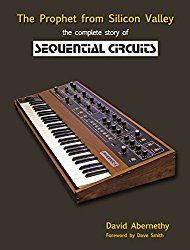
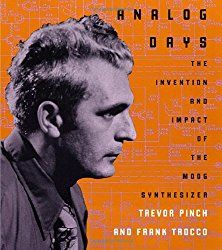
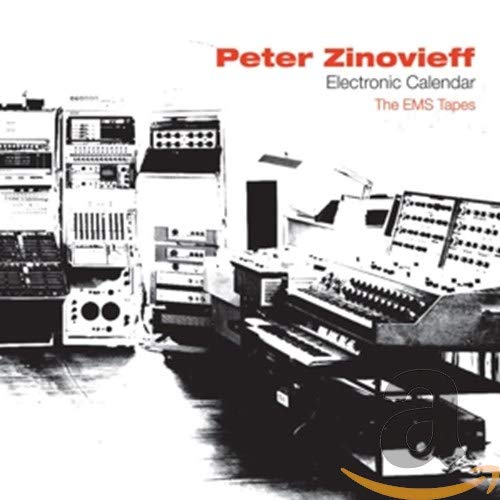
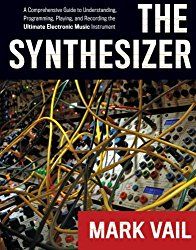
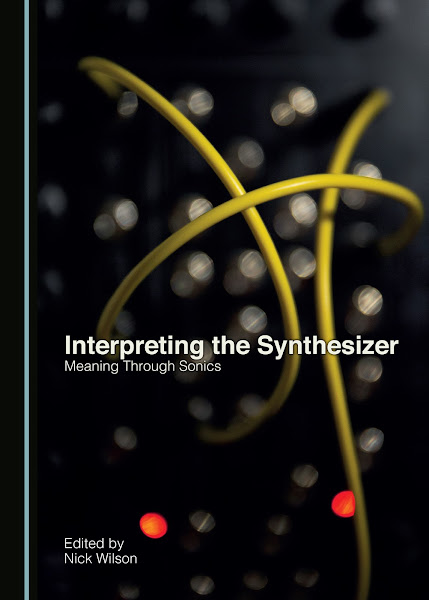
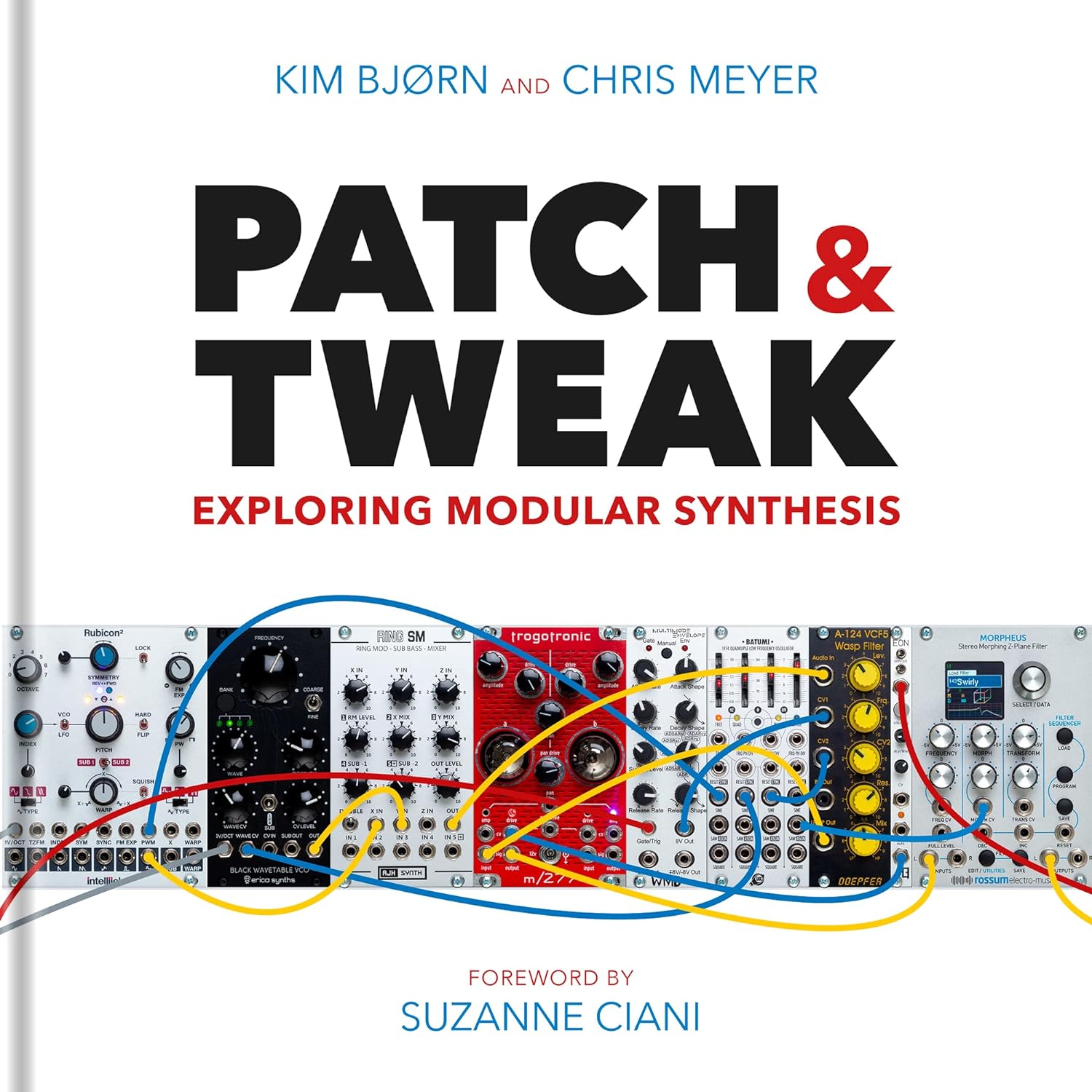
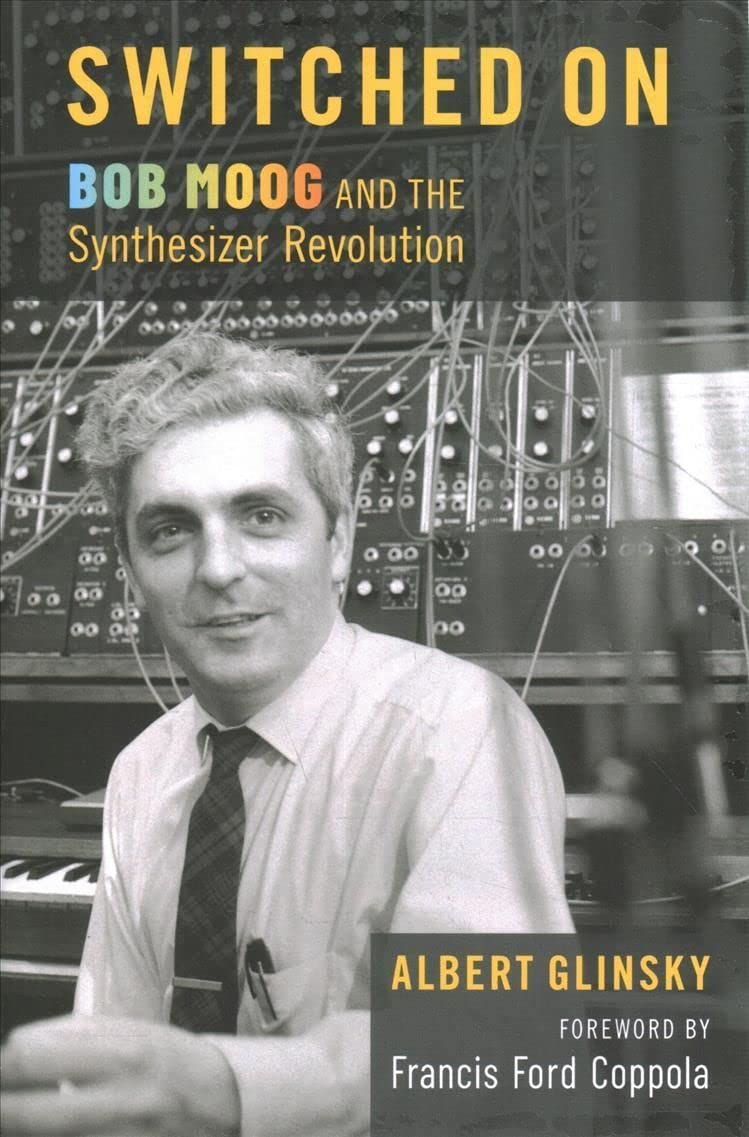
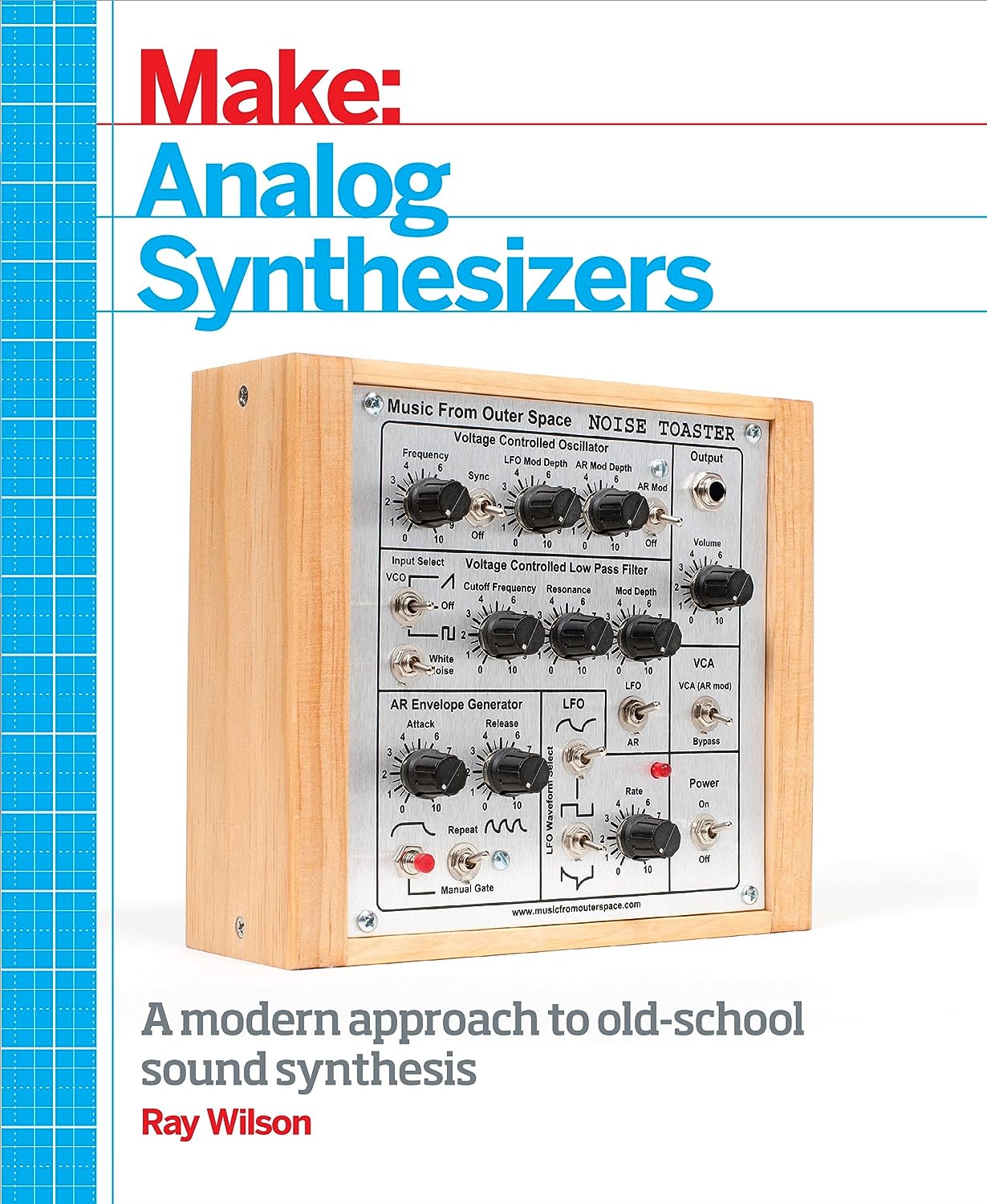
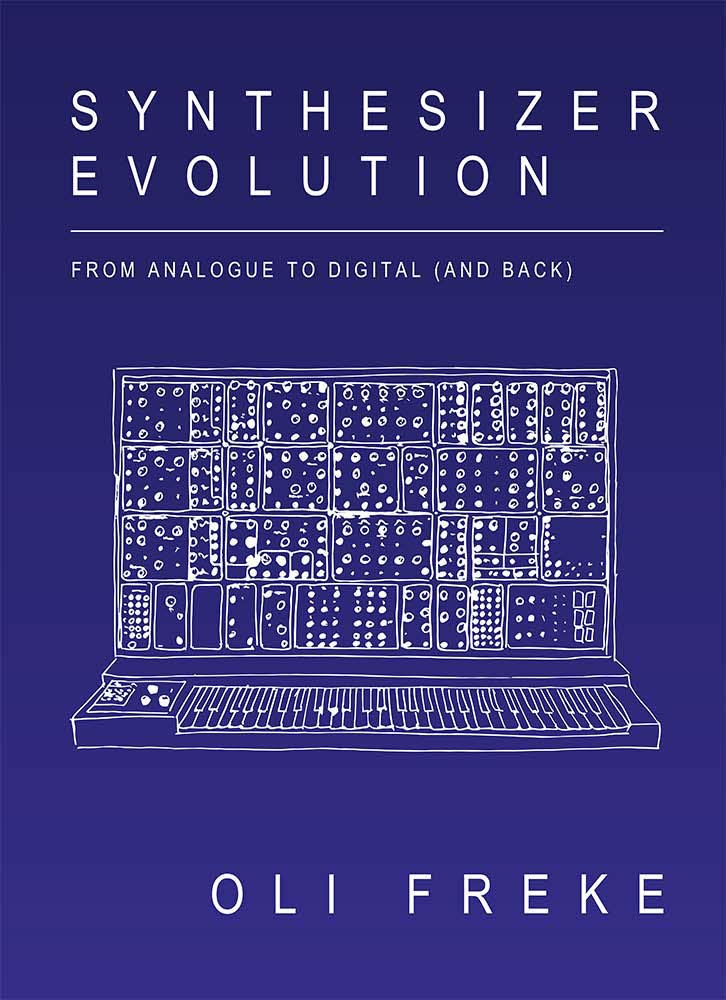
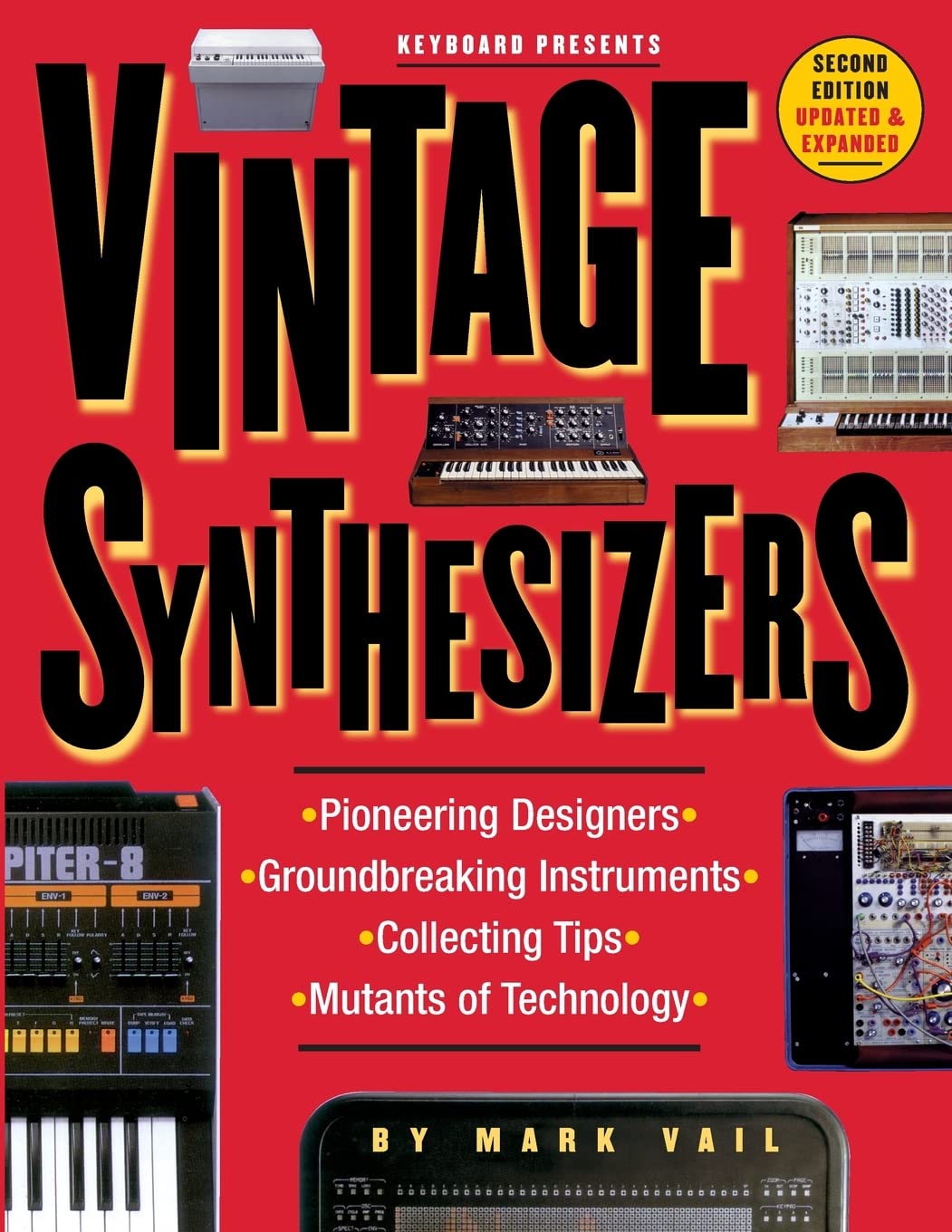
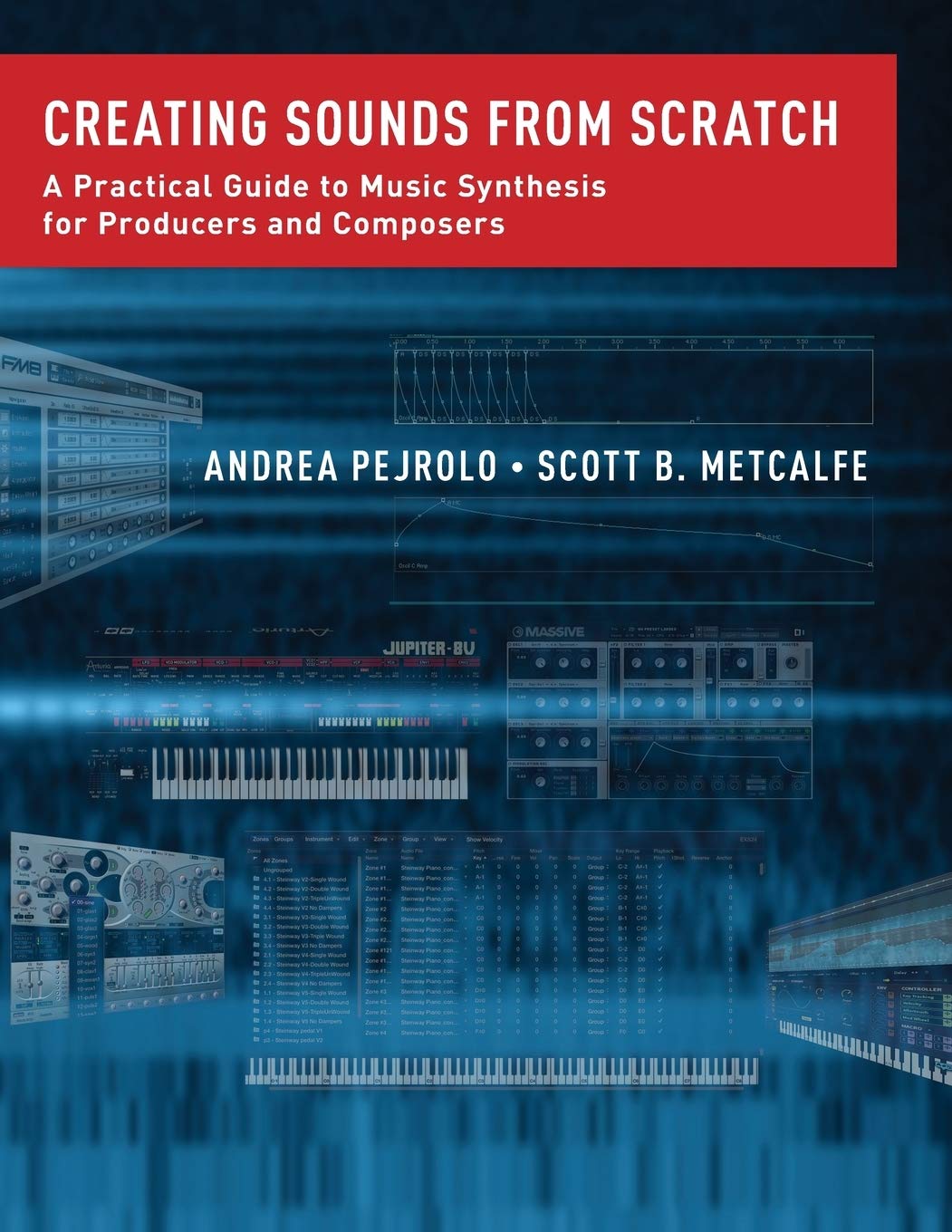
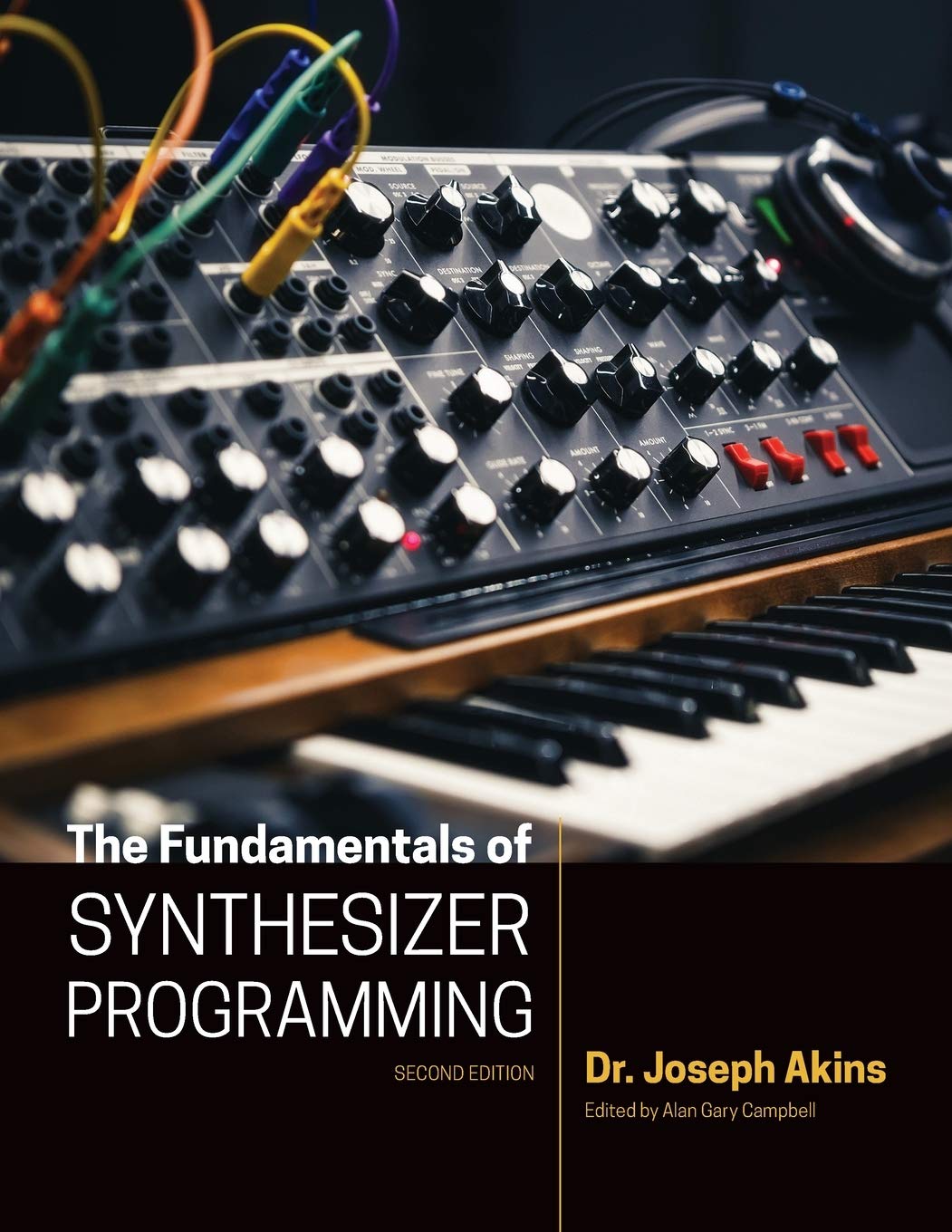
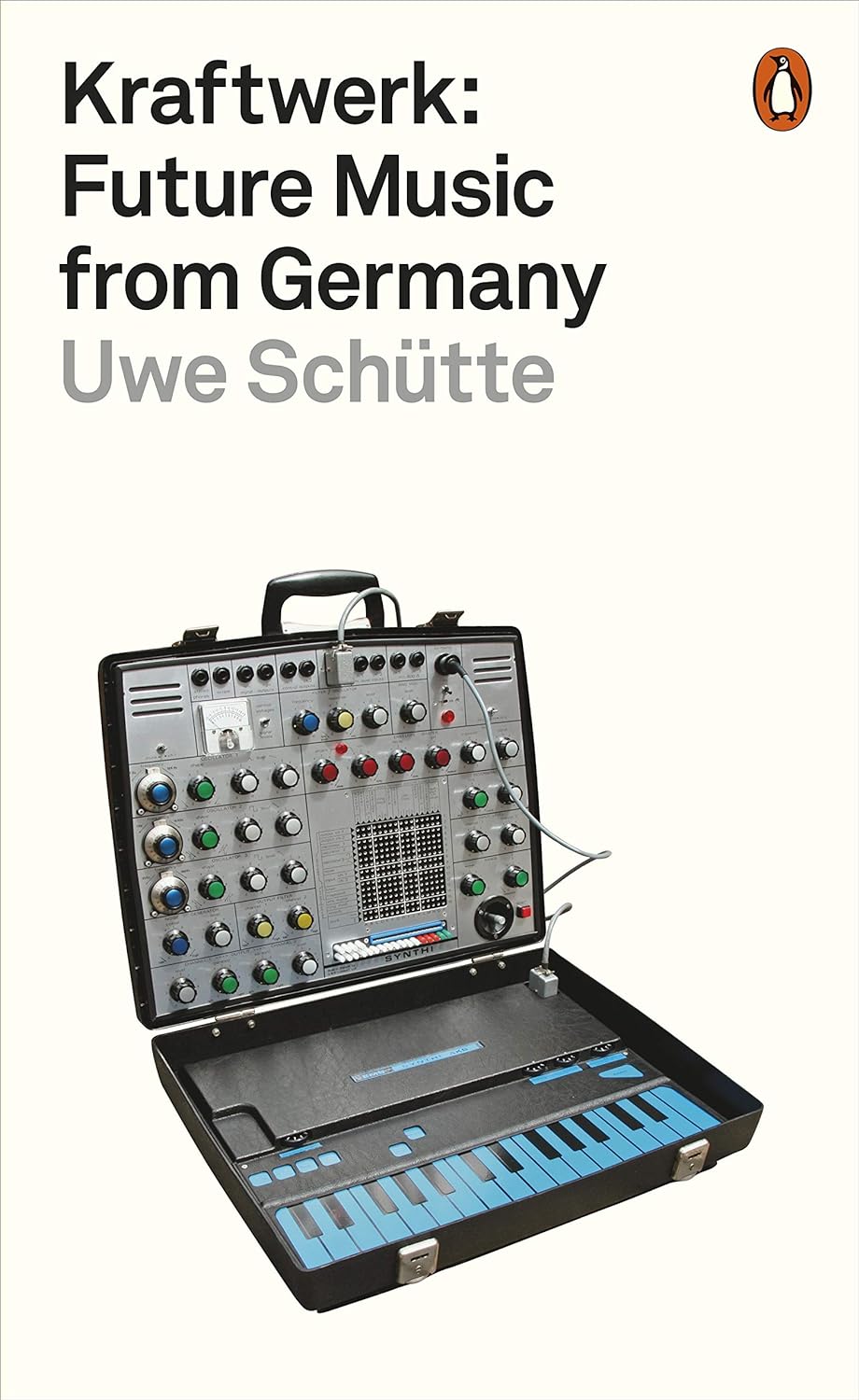
© Matrixsynth - All posts are presented here for informative, historical and educative purposes as applicable within fair use.
MATRIXSYNTH is supported by affiliate links that use cookies to track clickthroughs and sales. See the privacy policy for details.
MATRIXSYNTH - EVERYTHING SYNTH













© Matrixsynth - All posts are presented here for informative, historical and educative purposes as applicable within fair use.
MATRIXSYNTH is supported by affiliate links that use cookies to track clickthroughs and sales. See the privacy policy for details.
MATRIXSYNTH - EVERYTHING SYNTH

























